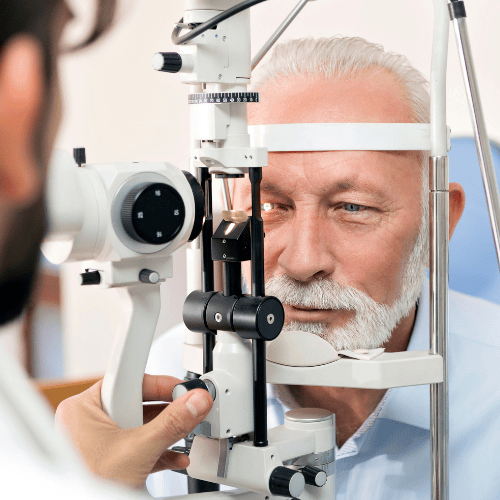Catch the New Wave in Eye Care Technology
When you are about to go in to see your optometrist for your next eye exam, what test causes you the most anxiety? No, not the “air puff” test (though that’s no crowd pleaser either). For most people, it’s “which is better, one or two?”. During this test your doctor will ask you a series of questions in rapid succession about “which lens appears clearer – 1, or 2? 3, or 4? 5, or 6?”. Don’t get it wrong, or it may affect how clearly you see the world with your new glasses for the next 1-2 years until your next exam!
No pressure at all!
This test, called the subjective refraction , has long been relied upon by your doctor to help refine and adjust your eyeglass and contact lens prescription for the best visual outcome. The trouble is, apart from the test anxiety it induces, there are fundamental flaws with this method of testing that limit its usefulness in determining your best eyewear prescription. The result? Glasses or contact lenses that just simply are not as good as they could be.
Here’s a summary of the problems with the “old way” of testing your vision:
- Eye care professionals have always been aware that our eyes are anything but “perfect”. They contain irregularities and imperfections, both on the surface and internally, that affect the way we see. We call these imperfections “ aberrations ”. Traditional methods of testing the eyes (including subjective refraction ) only measure two or three types of aberration – there are actually up to 12 .
- Traditional methods of refraction only test your eyes under one set of lighting and contrast conditions. A moderately lit room, viewing a brightly lit eye chart with dark, sharply outlined letters is the typical situation encountered in most eye examination rooms. However, very few day to day visual activities take place in exactly these same conditions! And in fact, our eyewear prescriptions can actually change as we move from one type of lighting to another! Looking at a computer screen, for example, is a very different viewing condition than driving down a poorly lit roadway at night. Some people will have problems night driving, for example, because their pupils dilate creating a completely different focusing situation that causes blurriness through their regular (daytime) eyeglass correction. Traditional eye examination processes fail to take this into consideration and do not account for varying lighting conditions or contrast environments we encounter every day.
- Making decisions based on the subjective refraction can cause problems with prescription accuracy. Especially if one has multiple types of aberrations as described above, being able to make decisions correctly and consistently on subtle lens presentations can be difficult and even impossible. People also vary in their abilities to detect small differences in blur. This can lead the prescriber towards an endpoint that may not actually be optimal for the patient being tested. Furthermore, if there are several types of aberrations present, there may actually be multiple combinations of correct lenses that may yield an “acceptable” result, with no guarantee that the one finally settled upon leads to the most optimal prescription.
As you’ve guessed by now, there’s a better way. Mountain View Optometry is the first practice in Southern Alberta to incorporate the Zeiss iScription Wavefront technology in all adult eye exams.
This is a game changer in primary eye care. Watch this Zeiss i.Scription video to learn more then book an appointment to experience it for yourself!
-Dr. W











